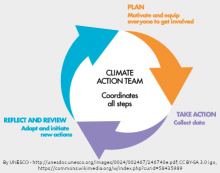
The design of interventions for climate change adaptation is a highly topical engineering problem. The concerns associated with the occurrence - with apparently increasing frequency - of extreme events that generate environmental and industrial risks are well known, just as it is known that the vulnerability of the land and the value of what is exposed to risk have increased. Therefore, there is the undeniable need to identify and design solutions to reduce the risks associated with the occurrence of climatic extremes (see, for example, the Italian National Strategy for Adaptation to Climate Change).
Adaptation strategies aim to modify socio-economic and environmental systems to make them more resilient with respect to current and future climate forcings, and with respect to their impacts. Adaptation can be done with the aim of mitigating potential harm - or to benefit from the opportunities - associated to climate change.
Adaptation actions can take different forms, depending on the context and the related societal organization, and depending on the risk they aim to mitigate. There is no universal solution: adaptation can range from building flood defenses, to developing early warning systems for cyclones, to adopting drought-resistant farming practices, to redesigning communication systems.
Adaptation actions have themselves an environmental impact and may themselves imply an increase of the emissions of greenhouse gases. Therefore, a careful evaluation of their benefits and impact in the long term is a necessary component of the design process.
Successful adaptation depends not only on governments, but also on the active, enduring and widespread engagement of stakeholders, including local, regional, national and international organizations, as well as on the development of scientific knowledge.
Compared to climate mitigation actions, adaptation actions generally (but not always) operate at local scale: national, regional and local, depending on the type of risk referred to (large-scale flood risk, urban flood risk, droughts, heat waves and so on). Therefore, adaptation strategies are mainly managed by local administrations rather than by international institutions. However, the technical approach to the problem must be based on a far-sighted vision and take into account international vision and experiences.
Figure 1 shows the conceptual approach to climate change adaptation design, which may be integrated with hazard mitigation (climate change mitigation) to build societal resilience.
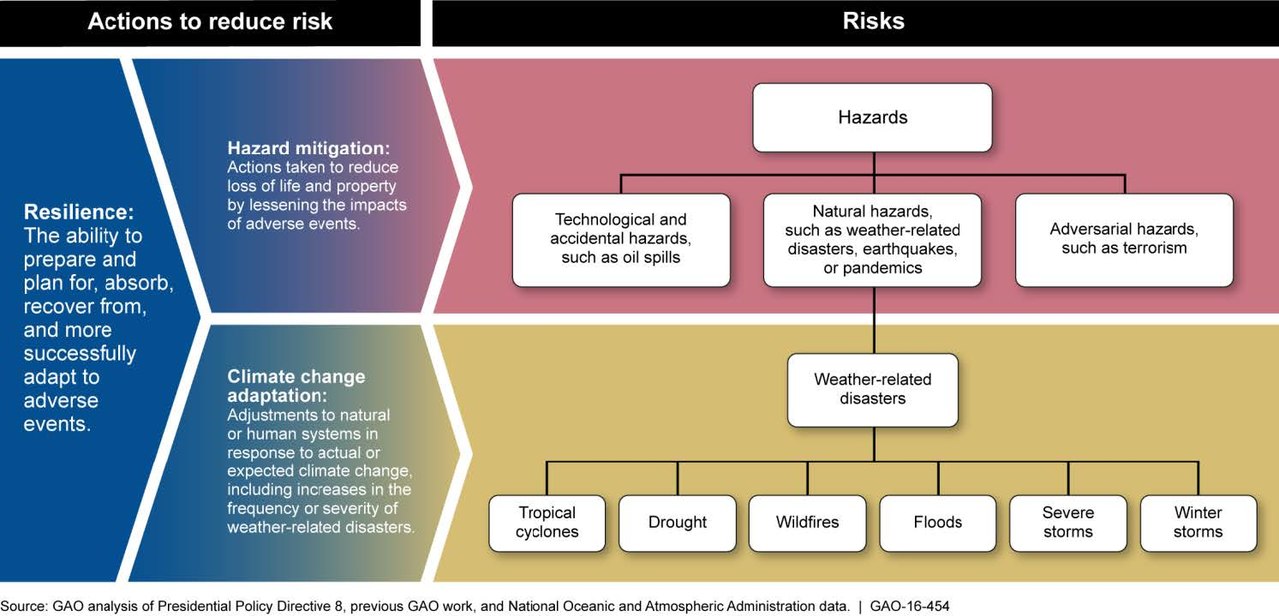
Figure 1. Conceptual approach to climate change adaptation design.
Climate change adaptation requires the preliminary identification of the most suitable actions by evaluating different alternatives. A classical approach to get to target is the so-called "top-down" strategy, also known as stepwise design and stepwise refinement (in some cases it is used as a synonym of decomposition): essentially it consists of breaking down a system to gain insight into its compositional sub-systems in a reverse engineering fashion. In a top-down approach an overview of the system is formulated along with its subcomponents. Each subcomponent is then analyzed in detail until the entire specification is reduced to base (or local) elements. When referring to climate change, the top-down approach may be used to assess local vulnerabilities and adaptation actions by using a predict-then-act decision framework: the starting point is a future climate scenario, that is routed through models to decipher the impact of future climate change and then the design variables that are finally used to design the adaptation action.
This top-down presents the problem that uncertainties in the climate scenario propagate along the process through the modelling cascade and may lead to significant uncertainty in the design variables. Given that uncertainty leads to precautionary design, the adaptation actions may turn out to be overly conservative and therefore too demanding in term of required resources and too impacting on the environment. Think, for instance, at a dam that is designed to adapt to predicted future droughts: if drought intensity is overestimated then the size of the dam and related artificial reservoir is overestimated as well, therefore inflating its environmental impact.
Recently the scientific literature has dedicated ample discussion to the use of the "bottom-up" approach for designing climate change adaptation measures. In a bottom-up approach the individual base elements of the system are first specified in great detail. These elements are then linked together until a complete top-level system is formed. Bottom-up processing is a type of information processing based on incoming data from the environment. When referring to climate change, the bottom-up approach first assesses the local context in terms of vulnerabilities and/or candidate strategies for adaptation. Then, the future climatic scenarios are used to test whether the identified strategies are resilient with respect to hypothetical future climates.
Being based on the preliminary analysis of the local context, the bottom-up approach is more likely to lead to the identification of no-regret solutions. Furthermore, by building the design on the basis of data that refer to the current local situation, a baseline is obtained to be used as a term of comparison with respect to the future climate scenario, therefore contributing to avoid oversizing.
A more detailed description of two bottom-up approaches that were recently proposed by the literature is given in what follows.
Robust Decision Making (RDM) characterizes uncertainty with multiple views of the future given the available knowledge of uncertainty. These multiple views are created by just looking at their possibility, without necessarily taking into account their probability. Then, robustness with respect to those multiple views, rather than optimality, is adopted as a criterion to assess alternative policies. Several different approaches can be followed to seek robustness. These may include, for instance, trading a small amount of optimum performance for less sensitivity to broken assumptions, or performance comparison over a wide range of plausible scenarios. Finally, a vulnerability-and-response-option analysis framework is used to identify robust strategies that minimize the regret that may occur over the different future scenarios. This structuring of the decision problem is a key feature of RDM which has been used in several climate adaptation studies (see, for instance, Bhave et al., 2016 and Daron (2015)).
Details on RDM are given here and briefly summarized here below.
- Step 1: identification of future scenarios, systems models and metrics to evaluate success. The first step in RDM is articulated by a joint work among stakeholders, planners, and decision makers. They sit together to identify possible future scenarios, without caring of their probability in this stage. Metrics to describe how well future goals would be met are also agreed upon. Metrics can be, for instance, water demands or water supplied, or unmet demand. Metrics can also include indexes such as reliability (e.g. the percentage of years in which the system does not fail). Environmental and/or financial metrics can also be considered such as minimum in-stream flows and costs of service provision. Furthermore, in this step candidate strategies for reaching the goals are identified, such as investments or programs. Stakeholders and consultants also agree on the models that will be used to determine future performances of the system.
- Step 2: evaluation of system performances. In this step, which is termed as "experimental design", the performances of the alternative strategies are evaluated with respect to the possible future scenarios, by estimating the related metrics of success.
- Step 3: vulnerability assessment. Stakeholders and decision makers work together to analyse the results from step 2 to identify the vulnerabilities associated to each strategy. The results from the simulations in Step 2 are first evaluated to determine in which futures the management strategy or strategies do not meet the management targets. Next, a scenario discovery leads stakeholders and decision makers to jointly define a small number of scenarios to which the strategy is vulnerable. The information about vulnerability can help define new management options that can be used to test strategies more robust to those vulnerabilities. Vulnerability analysis helps decision makers recognize those combinations of uncertainties that require their attention and those that can instead be ignored. Visual inspection or more sophisticated statistical analyses can be used depending on the problem and audience.
- Step 4: adaptation options to address vulnerabilities. The information on system's vulnerability can then be used to identify the most robust adaptation option. Moreover, suggestions to improve the considered options can also be gained from step 3. For instance, adaptive strategies can be considered, that can evolve over time depending on the observed conditions. Interactive visualizations may be used to help decision makers and stakeholders understand the tradeoffs in terms of how alternative strategies perform in reducing vulnerabilities.
- Step 5: risk management. At this stage decision makers and stakeholders can bring in their assumptions regarding the likelihoods of the future scenarios and the related vulnerable conditions. For example, if the vulnerable conditions are deemed very unlikely, then the reduction in the corresponding vulnerabilities may not be worth the cost or effort. Conversely, the vulnerable conditions identified may be viewed as plausible or very likely, providing support to a strategy designed to reduce these vulnerabilities. Based on this tradeoff analysis, decision makers may finally decide on a robust strategy.
RDM characterizes uncertainty in the context of a particular decision. That is, the method identifies those combinations of uncertainties most important to the choice among alternative options and describes the set of beliefs about the uncertain state of the world that are consistent with choosing one option over another. This ordering provides cognitive benefits in decision support applications, allowing stakeholders to understand the key assumptions underlying alternative options before committing themselves to believing those assumptions.
RDM reverses the order of traditional decision analysis by conducting an iterative process based on a vulnerability-and-response-option rather than a predict-then-act decision framework, which is adaptation based on a single projected future. This is known as a bottom-up analysis and differs from the top-down method that is also widely utilised in decision making (Blöschl et al., 2013).
Decision-scaling (DS) is another bottom-up analysis approach to decision making. It has been introduced in the context of climate change adaptation (Brown et al., 2012). The term "decision scaling" refers to the use of a decision analytic framework to investigate the appropriate downscaling of climate information that is needed to best inform the decision at hand. Here downscaling refers to the identification of the relevant climatic information from the large ensemble of simulations provided by Global Circulation Models (GCMs). DS differs from current methodologies by utilizing the climate information in the latter stages of the process within a decision space to guide preferences among choices.
The analytical heart of DS a kind of “stress test” to identify the factors or combinations of factors that cause the considered system to fail. Thus, in the first step of the analysis vulnerabilities are identified. These vulnerabilities can be defined in terms of those external factors and the thresholds at which they become problematic. The purpose is to identify the scenarios that are relevant to the considered decision which serve as the basis for any necessary scientific investigation.
In the second step of the decision making process, future projections of climate are then used to characterise the relative likelihood or plausibility of those conditions occurring. By using climate projections only in the second step of the analysis, the initial findings are not diluted by the uncertainties inherent in the projections. In the third step of the analysis strategies can be planned to minimize the risk of the system.
The result is a detected ‘vulnerability domain’ of key concerns that the planner or decision maker can utilise to isolate the key climate change projections to strengthen the respective system against, which differs from the bottom-up analysis featured in RDM (see Figure 2).This setup marks DS primarily as a risk assessment tool with limited features developed for overall risk management.
The workflow of DS is compared with the one of RDM in Figure 2, where the workflow of the traditional top-down approach is also depicted.

Figure 2. Top-down decision approach versus DS and RDM bottom-up approaches – adapted from Roach (2016), Brown et al. (2012), Hall et al. (2012) and Lempert and Groves (2010). Images are taken from the following sources: NOAA Geophysical Fluid Dynamics Laboratory (GFDL) [Public domain], Mike Toews - Own work, CC BY-SA 3.0, https://commons.wikimedia.org/w/index.php?curid=15592558, James Mason [Public domain], Dan Perry [CC BY 3.0 (https://creativecommons.org/licenses/by/3.0)], Tommaso.sansone91 - Own work, CC0, https://commons.wikimedia.org/w/index.php?curid=77398870, Svjo - Own work, CC BY-SA 3.0, https://commons.wikimedia.org/w/index.php?curid=20327097.
Future climate scenarios play a key role for both the top-down and bottom-up approaches. In the former, they are considered in the first instance of the process, while in the latter they are considered after the current vulnerabilities and/or possible solutions are identified.
Future climate scenarios may be generated by using alternative and complementary methods than can be possibly integrated in solutions of different complexity, like for instance statistical extrapolation and/or mathematical models of the physics, chemistry, ecology and anthropogenic impact of the climate system. A key role is played by climate models. These are mathematical models that reproduce the distribution in space and time of key variables of the atmospheric system, such as temperature, wind, rainfall and so forth.
Global climate models are mathematical representation of the climate system's dynamics. They range from very simplified mathematical representation, like the so-called box models, to complex emulations of the whole system that apply a set of physical equations at local scale, like the General Circulation Models (GCM).
Simulations obtained by climate models are affected by uncertainty, which is usually evaluated by ensemble prediction. Instead of making a single prediction by using a single model and a single input information and parameter values, a set (or ensemble) of predictions is produced, by using several models and/or several input data and initial and boundary conditions. This set of predictions is assumed to give an indication of the range of possible future climates. However, ensemble prediction does not provide a comprehensive assessment of uncertainty. An interesting note in this respect is offered by Brown et al. (2012):
A problem with this approach is that GCM projections are relatively poor scenario generators. They describe a “lower bound on the maximum range of uncertainty” (Stainforth et al., 2007). Even a large multimodel ensemble provides relatively few samples in a typical analysis relative to the size possible through stochastically generated risk analysis. Larger ensembles are becoming available, such as via the climate prediction.net experiment (Stainforth et al., 2004) but still face issues of biases that may preclude the discovery of plausible climate risks.
In other words, ensemble prediction provides a range for model output which cannot encompass future situations that models may not able to predict. Such future situations may be actually worse than model predictions in terms of change with respect to the future climate and therefore simulations by climate models may underestimate future risk.
For example, climate models may not be able to predict tipping points, which is a state of the system such that a tiny change of the state itself leads to a new equilibrium state (see Figure 3). The tipping point may be reversible or not.
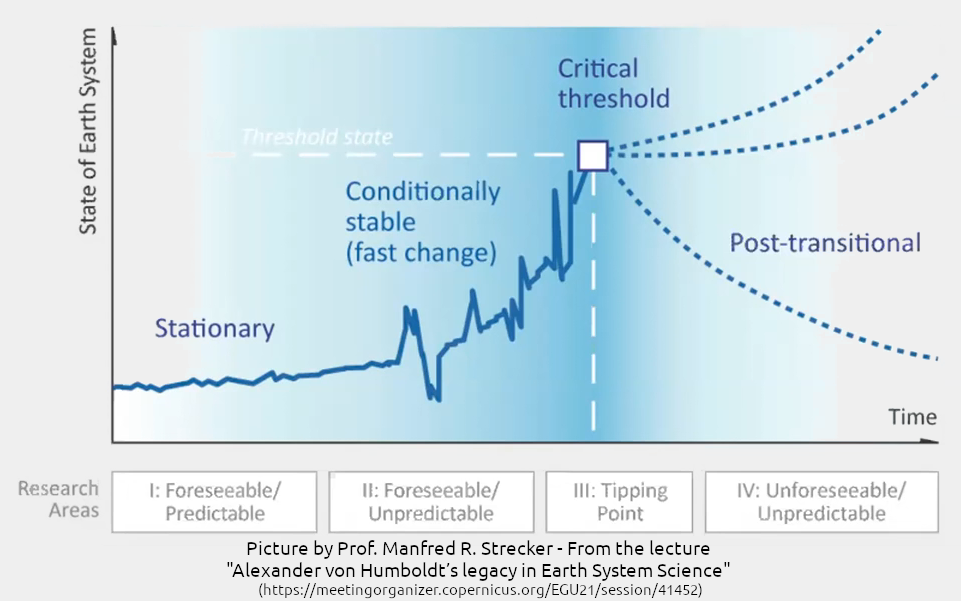
Figure 3. Tipping point in a system. Passing the threshold may lead to new equilibrium states. Courtesy by Prof. Manfred R. Strecker.
Tipping points may be induced by positive (self-reinforcing) feedbacks. Components of the Earth system that may pass a tipping point have been referred to as tipping elements. (see Figure 4). Tipping elements are found in the Greenland and Antarctic ice sheets, possibly causing tens of meters of sea level rise. The IPCC states that the precise levels of climate change sufficient to trigger a tipping point remain uncertain, but that the risk associated with crossing multiple tipping points increases with rising temperature.
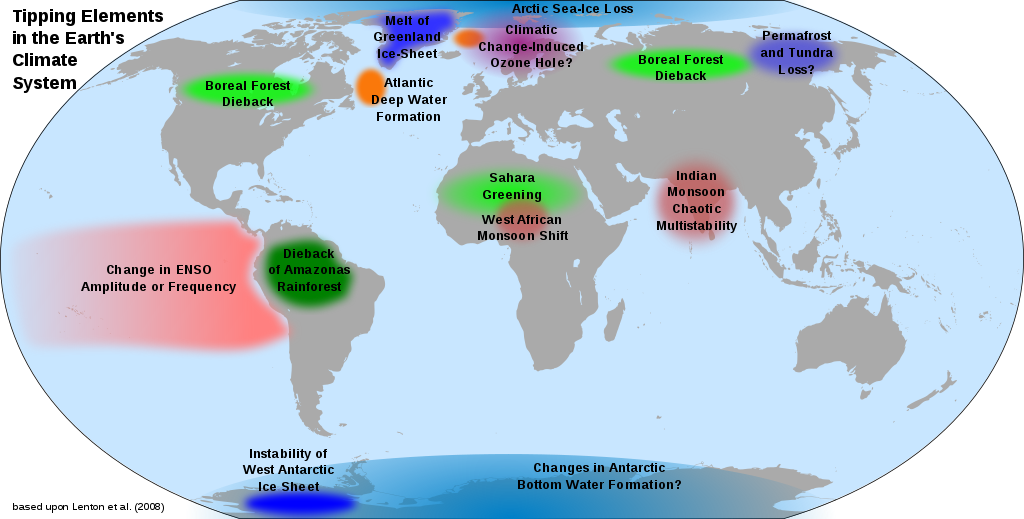
Figure 4. Tipping elements in the Earth's climate system, based upon Lenton et al. (2008). By CodeOne (blank map), DeWikiMan (additional elements), https://en.wikipedia.org/wiki/File:Climate-tipping-points-en.svg.
Most of the possible tipping points shown in Figure 4 are not reproduced by climate models, that are not programmed to reproduce a dynamics which we still don't know. Furthermore, climate models are still unable to simulate the current climate at some spatial and temporal scales and therefore do not reproduce current critical situations.
An alternative to climate models for generating future climatic scenarios is given by stochastic simulation (see also my lecture Climate change and water cycle). Accordingly, a statistical model is fitted to an historical climatic record and therefore tested against the current climate. If the fit is satisfactory, the statistical model is used to generate future scenarios. Anthropogenic forcings can be accounted for by perturbing the inherent statistics of the stochastic model according to selected predictions given by climate models. Stochastic simulation provides an estimate of uncertainty which is more comprehensive with respect to ensemble simulation with climate models, but still they fail in predicting tipping poits, unless their statistics are modified according to suitable assumptions, which however may be difficult or impossible to formulate.
The limited capability to effectively estimate uncertainty for future simulations whatever model is used - along with the necessity to resolve current problems and vulnerabilities - provides further support to adopt the bottom-up approach in decision making for climate adaptation. One may argue that the designed actions may still be unable to make society resilient against unforseeable tipping points. However, their capability to at least resolve the actual critical situations makes solutions identified with the bottom-up approach an appealing opportunity in view of their no-regret nature and the possibility to increase their resilience. In fact, in technical design it is often impractical to design a structure against any type of threats (including unforeseeable threats) as they may change over time.
The idea of risk based design is that adaptation measures are identified and designed with the purpose of mimizing the risk we aim to adapt to. The framework for risk based afdaptation design is risk theory, which is based on the following premises:
- The risk R induced by a considered event is given by the combination of hazard P, exposure E and vulnerability V.
- R is a measure of the expected damage during an assigned time period given by the event, depending on the vulnerability of the considered system and the potential damage, which is in turn related to the nature and quantity of the exposed goods.
- The hazard P is given by the probability of the considered event. For instance, it can be the probability of an inundation.
- Vulnerability V is the probability that the system (for instance a given societal asset) is damaged at a certain level, if the considered event occurs. For instance, if a town is protected by levees the probability of being damaged is lower than in the absence of any protection.
- The exposure E reflects the presence of goods exposed to the considered event. For instance, it can be associated to the economic value of the damage induced by an inundation.
Risk R can be estimated through the relationship
R = P V E.
It is interesting to analyze the relationship between P, V, E and R. Such relationship can be studied by by analisying the progress of E, V and R as a function of P. An example of such progress, which of course depends on the considered systems and the type of risk, is presented in Figure 5. Some interesting features can be highlighted.
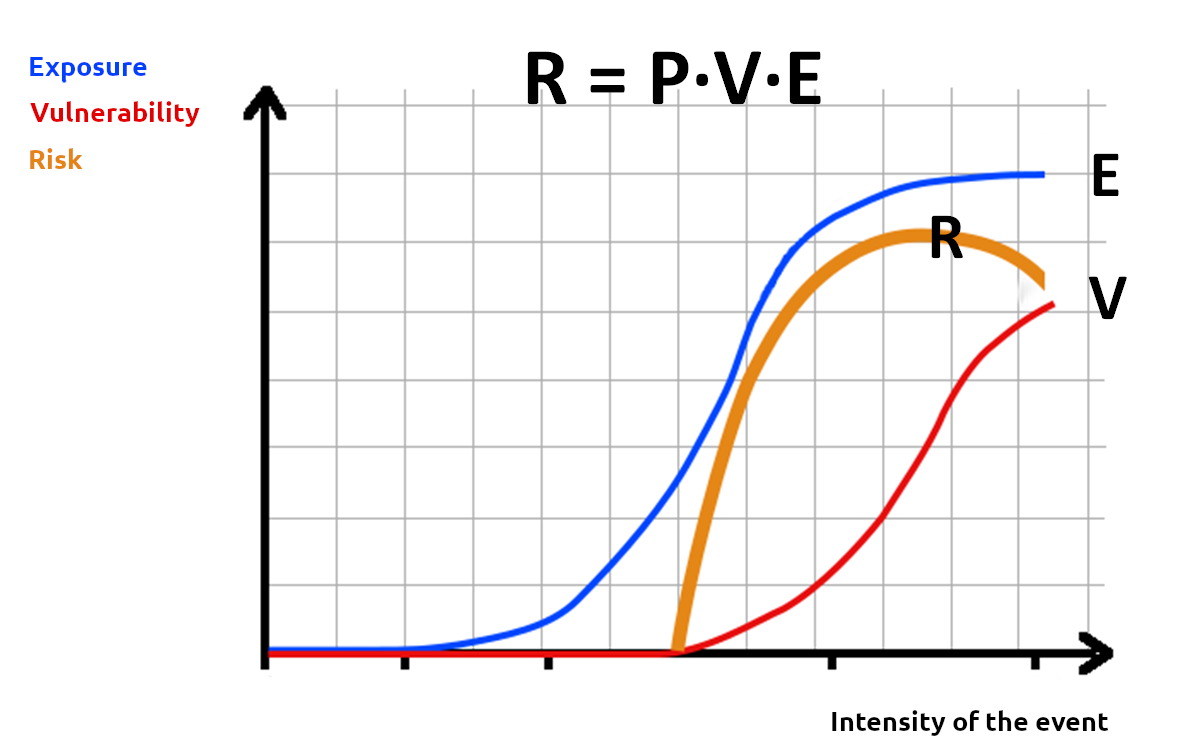
Figura 5. Example hazard-exposure-vulnerability curve (PEVR curve).
First of all it should be noted that in Figure 5 the hazard is expressed in terms of intensity of the event, to make the figure more illustrative. For each event, the intensity is univocally associated to its hazard. The higher the intensity, the lower the hazard. It should be noted that such association between intensity and hazard may vary after climate change.
As the intensity increases, vulnerability and exposure typically increase. For low intensity exposure and vulnerability may be negligible or null, but with increasing intensity they generally increase as well. As intensity attains very high values both vulnerability and exposure tend to asymptotically reach a maximum.
The risk R, which results from the product of hazard, vulnerability and exposure, has a different trend because as the intensity increases hazard decreases. In general it is possible to identify a critical intensity which corresponds to the maximum risk.
Climate change results in the change of the hazard associated to events of a given intensity. Therefore, for a given hazard we experience a change in vulnerability. The task of adaptation actions is to reduce vulnerability and/or exposure, in order to compensate for the increased hazard.
The above procedure highlights and vulnerability, exposure and hazard estimation are critical for the design of a successful climate action. While vulnerability and exposure are relatively easy to estimate, hazard estimation is challenging, not to mention the additional uncertainty induced by climate change. Climate predictions are of course an essential information to estimate future hazard. These considerations, moreover, highlight the essential value of uncertainty estimation for future climate scenarios, as the future hazard strictly depends on climate prediction uncertainty.
According to the bottom-up approach for adaptation design, we may articulate the design itself in 2 phases:
- In the first phase we asses the effectiveness, in terms of vulnerability and exposure, of the adaptation solution by referring to the current PEVR curve.
- In the second phase we analyse the impact of climate change on the hazard.
The above procedure presents the advantage that the benefits attainable with a given adaptation action is evaluated with respect to the current conditions, by means of an environmental and socio-economic analysis, in a context that does not therefore present the uncertainty related to future predictions. The analysis of the impact of climate change is instead carried out in the second phase, to check if actions are resilient enough with respect to the predicted changes.
The determination of the PEVR curves in the design phase is affected by uncertainty. The recent literature provides theoretical and technical bases for the estimation of uncertainty in the hydrological field, for the assigned level of confidence, with sufficient reliability to support the technical design (see, for example, Montanari (2011)). An example of confidence bands from PEVR curves is shown in Figure 6.
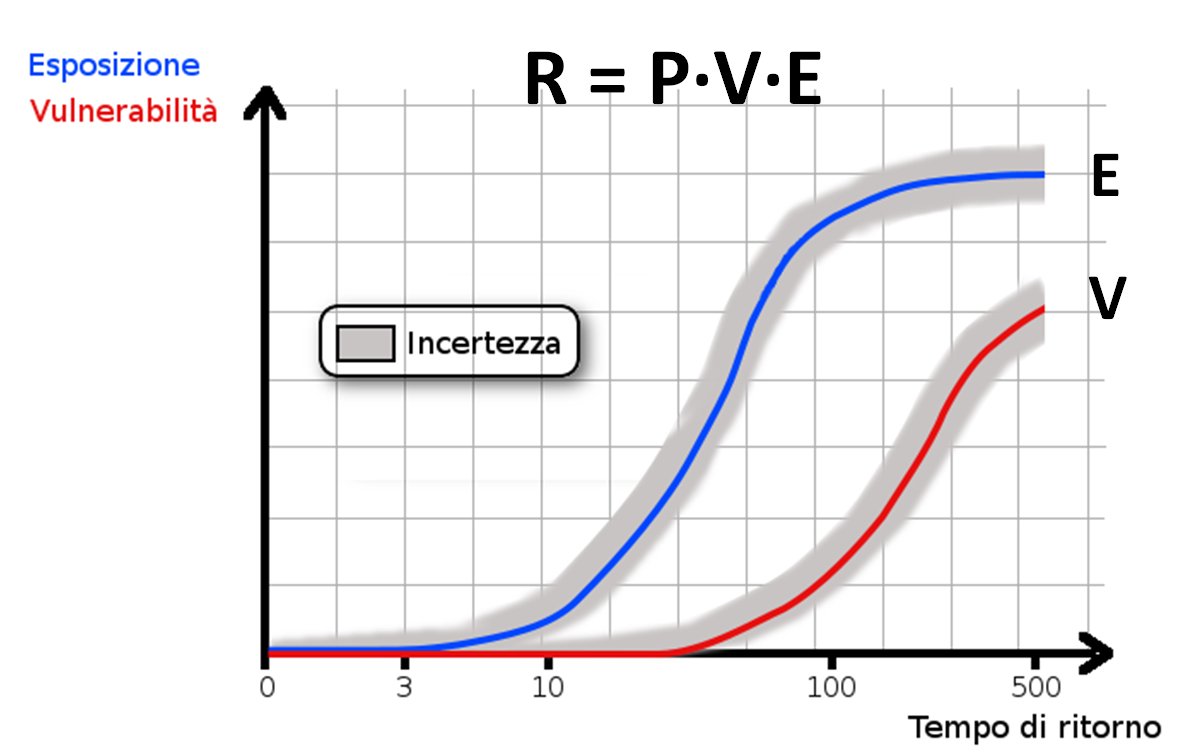
Figure 6. Uncertainty enevelop for PEVR curves.
Figure 7 presents a possible configuration of the PEVR curve after the implementation of an adaptation structural intervention, like building a dam. This is in many cases effective in reducing vulnerability over an assigned range of return periods (effectiveness range). Since the structural interventions normally requires a considerable use of resources, they are often optimised by focusing on the return period corresponding to the highest risk. It is interesting to note that for events of larger return period with respect to the design one, the structural intervention could also generate an increase in vulnerability - think, for example, of what could occur following the collapse of an embankment structure. In the same way, it should be noted that the implementation of structural interventions could generate an increase in exposure, due to the feeling of security that these interventions generate, which leads to an increase in investments in areas subject to risk (see, for example, the so-called "levee effect" introduced by Newell & Wasson (2002)).
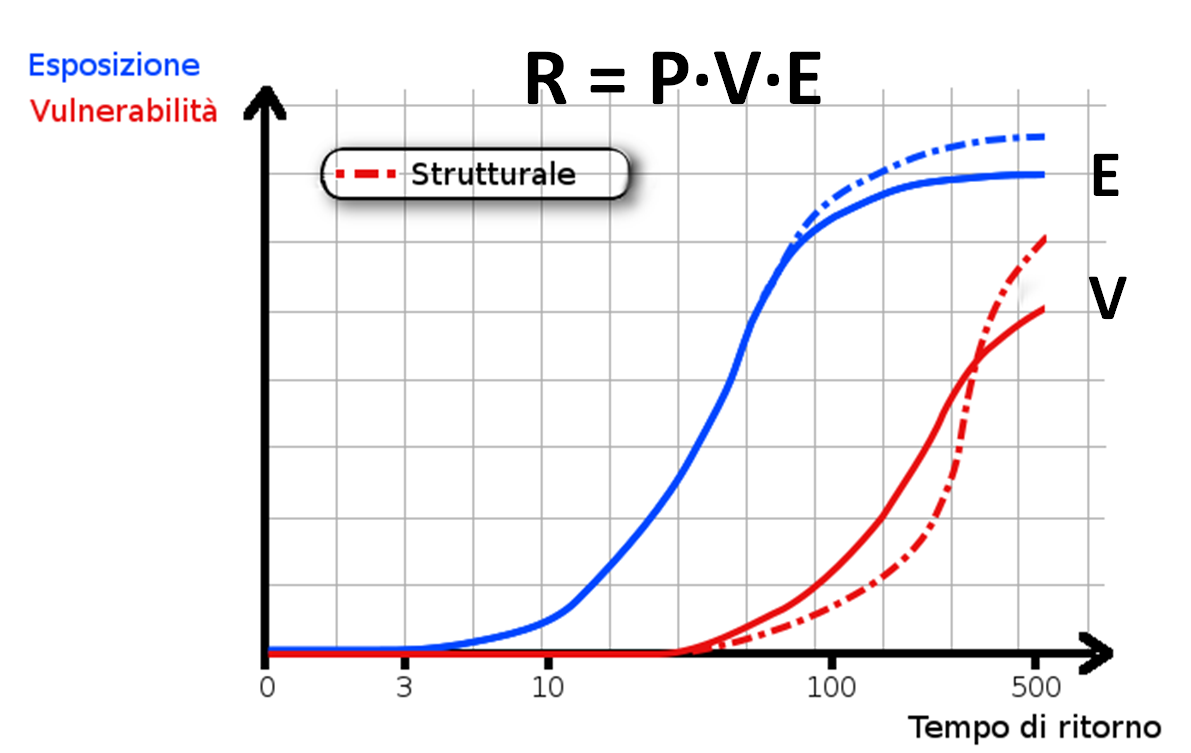
Figura 7. Example of PEVR curves after a structural intervention.
Non-structural interventions, which include green infrastructures, generate a reduction in vulnerability which is normally extended over narrower ranges of effectiveness (Figure 8) and shifted towards shorter return times compared to structural interventions. Non-structural interventions most of the time do not generate increases in vulnerability or exposure.
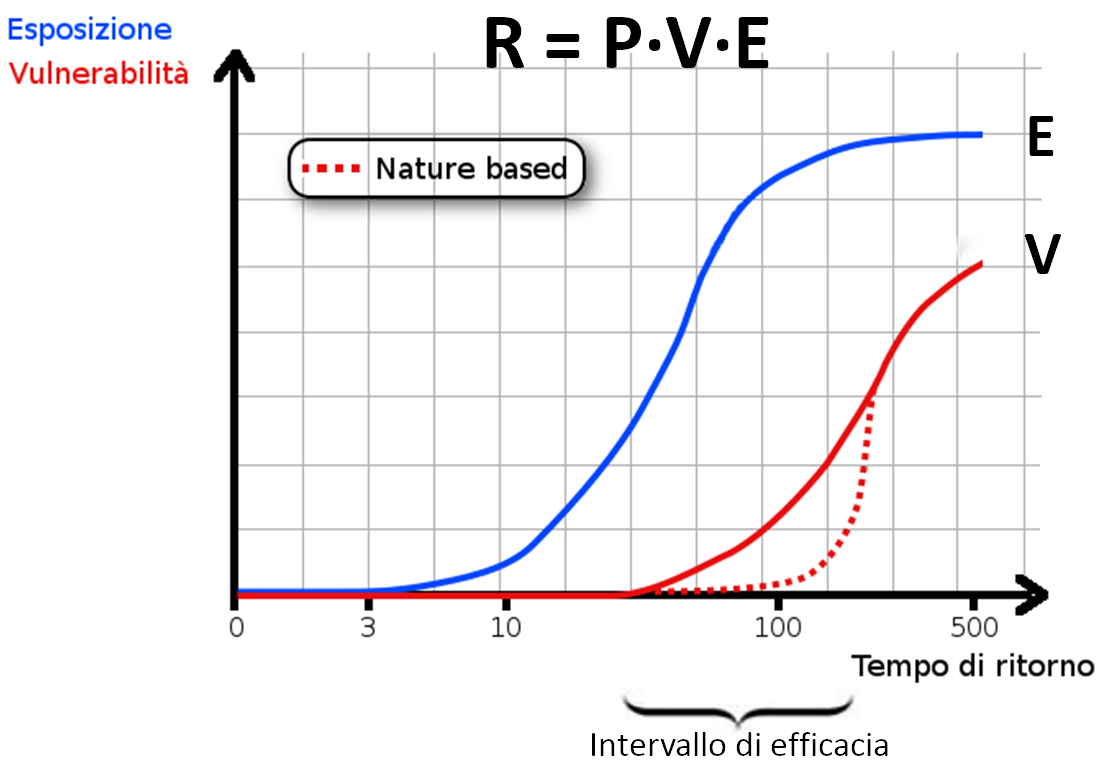
Figura 8. Example of PEVR curves after a non-structural intervention.
By coupling non-structural and structural interventions it is possible to extend the range of effectiveness. The way the effects of interventions of different nature interact must be analyzed on a case-by-case basis. Some interventions can be combined "in series", therefore operating over a wide range of return periods. Other interventions can combine in "parallel", i.e. give rise to large reductions in vulnerability. See, for example, Figure 9. The effect of each intervention - or combination of interventions - on the PEVR curves must be analyzed by hydrological and hydraulic analysis. The current state of knowledge makes it possible to estimate the impact of adaptation interventions - and the relative uncertainty - with sufficient reliability to support the technical design, for a wide range of applications and even in the presence of limited information on the state of the system.
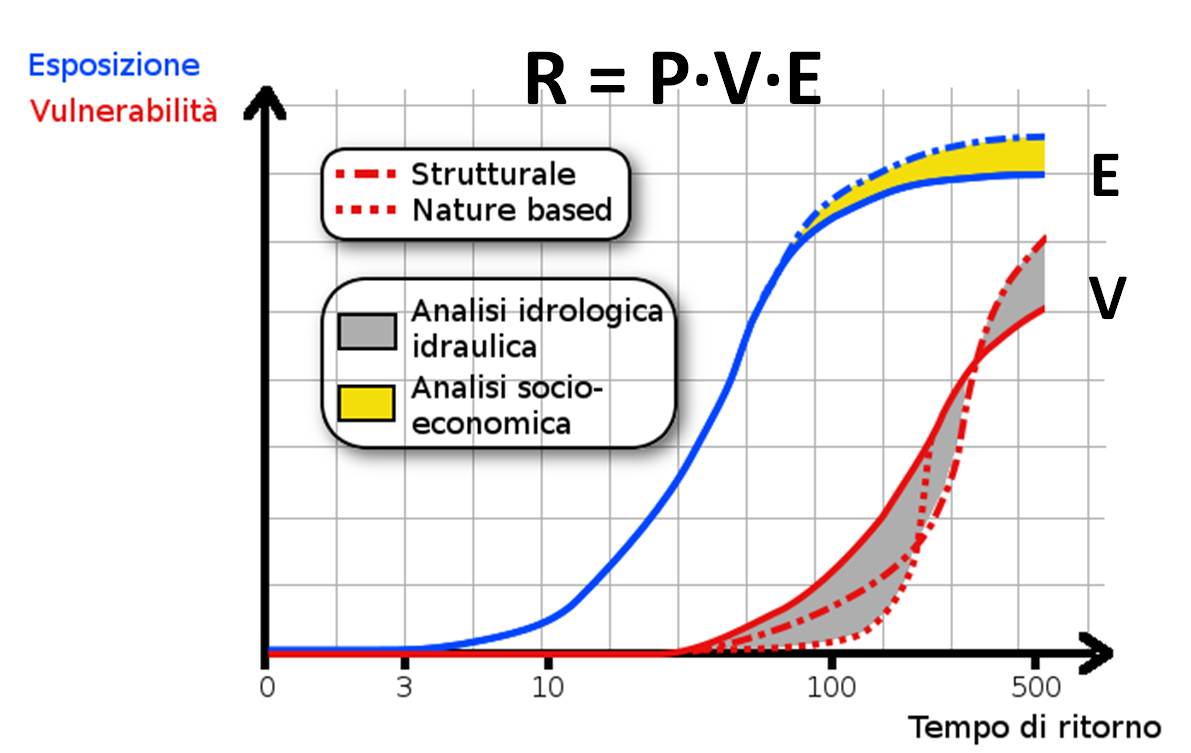
Figura 9. Example of PEVR cruves after a combination of structural and non-structural interventions.
Adaption actions can be grouped into three categories:
- Structural and physical adaptation (this can be grouped into engineering and built environment, technological, ecosystem-based, services);
- Social adaptation (educational, informational, behavioral);
- Institutional adaptation (economic, laws and regulation, government policies and programs).
Structural and physical adaptations include:
- Flood an drought adaptation;
- Agricultural adaptation (including irrigation);
- Energy production adaptation.
Social adaptation actions include:
- Enhancing adaptive capacity (reducing poverty etc.);
- Insurance;
Institutional adaptation includes:
- Effective policies;
- Development of adaptation plans;
Scheraga and Grambsch (1998) identify 9 fundamental principles to be considered when designing adaptation policy:
- The effects of climate change vary by region;
- The effects of climate change may vary across demographic groups;
- Climate change poses both risks and opportunities;
- The effects of climate change must be considered in the context of multiple stressors and factors, which may be as important to the design of adaptive responses as the sensitivity of the change;
- Adaptation comes at a cost;
- Adaptive responses vary in effectiveness, as demonstrated by current efforts to cope with climate variability;
- The systemic nature of climate impacts complicates the development of adaptation policy;
- Maladaptation can result in negative effects that are as serious as the climate-induced effects that are being avoided;
- Many opportunities for adaptation make sense whether or not the effects of climate change are realized.
While the above principles are informative from a policy maker point of view, they do not provide technical guidance for the design of climate adaptation strategies. A list of possible interventions to climate change adaptation is given here and reads as follows:
- Installing protective and/or resilient technologies and materials in properties that are prone to flooding;
- Changing to heat tolerant tree varieties;
- Rainwater storage to deal with more frequent flooding rainfall – Changing to water permeable pavements, adding water-buffering vegetation, adding underground storage tanks, subsidizing household rain barrels;
- Reducing paved areas to deal with rainwater and heat;
- Adding green roofs to deal with rainwater and heat;
- Requiring waterfront properties to have higher foundations;
- Raising pumps at wastewater treatment plants;
- Surveying local vulnerabilities, raising public awareness, and making climate change-specific planning tools like future flood maps;
- Incentivizing lighter-colored roofs to reduce the heat island effect;
- Installing devices to prevent seawater from backflowing into storm drains;
- Installing better flood defenses, such as sea walls and increased pumping capacity;
- Buying out homeowners in flood-prone areas;
- Raising street level to prevent flooding.
Several of the above projects have been implemented in numerous cities around the world, including many cities in Italy. The list of possible technical options is actually longer. For water resources management, one may mention the increase of the interconnectedness of water distribution networks, the minimization of leakage in water supply systems, the use of artificial water reservoir, the adaptation of agricultural techniques, precise irrigation and so forth. Climate change adaptation is an example of no regret solution, namely, actions by households, communities, and local/national/international institutions that can be justified from economic, and social, and environmental perspectives whether natural hazard events or climate change (or other hazards) take place or not. Climate change adaptation is an evolving field, which is relevant to society no matter if climate change is human induced or not. Adapting to the variability of climate has always been a target for humanity. The relevant research innovation that humans are continuously gaining opens new doors towards adaptation and therefore sustainability. The role of engineering in climate change adaptation is extremely important.
Design of adaptation actions is a typical task of engineering and as such relies on the prediction of future conditions. Traditional engineering practices are based on data analysis and modeling to infer the expected behaviours of the analysed process. In engineering, data analysis and modeling are traditionally used as complementary approaches to develop predictions and estimate their uncertainty. A comprehensive assessment of uncertainty requires a comparison of the predicted and observed state of the analysed system. Data analysis is usually carried out through statistical models.
In view of the above considerations, statistical models and climate models should be synergistically used in the design of climate change adaptation actions. In addition, engineering design should be always supported by expert knowledge to identify critical states of the system under the present conditions and future climate change. Like in any other field of engineering, risk based design should be adopted to minimise future risk and enhance the resilience of solutions.
Blöschl, G., Viglione, A., & Montanari, A. (2013). Emerging approaches to hydrological risk management in a changing world. In: Climate Vulnerability, 3-10, https://doi.org/10.1016/b978-0-12-384703-4.00505-0.
Bhave, A. G., Conway, D., Dessai, S., & Stainforth, D. A. (2016). Barriers and opportunities for robust decision making approaches to support climate change adaptation in the developing world. Climate Risk Management, 14, 1-10.
Brown, C., Ghile, Y., Laverty, M., & Li, K. (2012). Decision scaling: Linking bottom‐up vulnerability analysis with climate projections in the water sector. Water Resources Research, 48(9).
Daron, J. (2015). Challenges in using a Robust Decision Making approach to guide climate change adaptation in South Africa. Climatic Change, 132(3), 459-473.
Hall, J. W., Lempert, R. J., Keller, K., Hackbarth, A., Mijere, C., & McInerney, D. J. (2012). Robust climate policies under uncertainty: A comparison of robust decision making and info-gap methods. Risk Anal., 32(10), 1657–1672.
Lempert, R. J., & Groves, D. G. (2010). Identifying and evaluating robust adaptive policy responses to climate change for water management agencies in the American west. Technol. Forecast. Soc., 77(6), 960–974.
Newell, B., & Wasson, R. (2002). Social system vs solar system: why policy makers need history. Conflict and cooperation related to international water resources: historical perspectives, 62, 3ff.
Roach, T. P. (2016). Decision Making Methods for Water Resources Management Under Deep Uncertainty. Available on-line at https://ore.exeter.ac.uk/repository/bitstream/handle/10871/25756/RoachT.pdf?sequence=1.
Download the powerpoint presentation of this lecture
Last modified on April 16, 2023
- 2308 views
